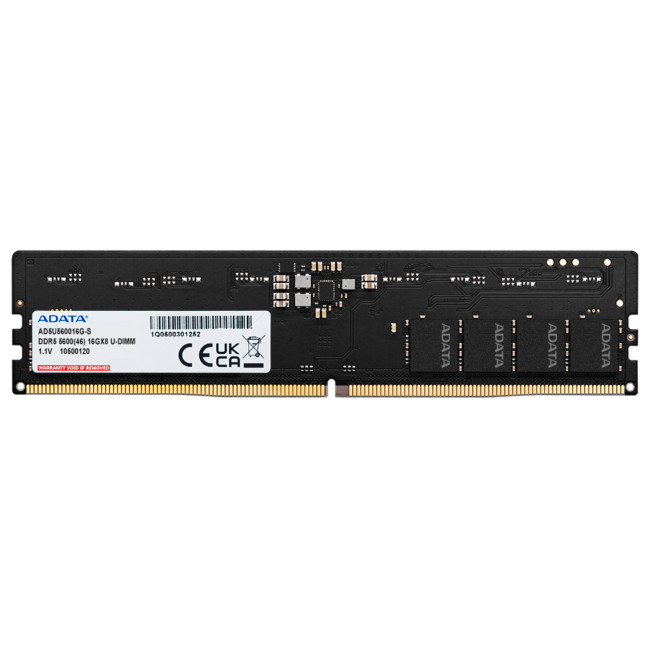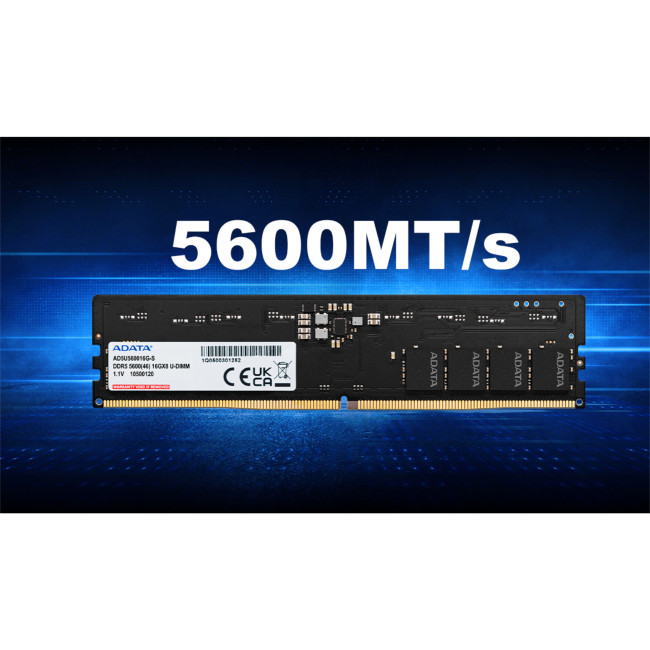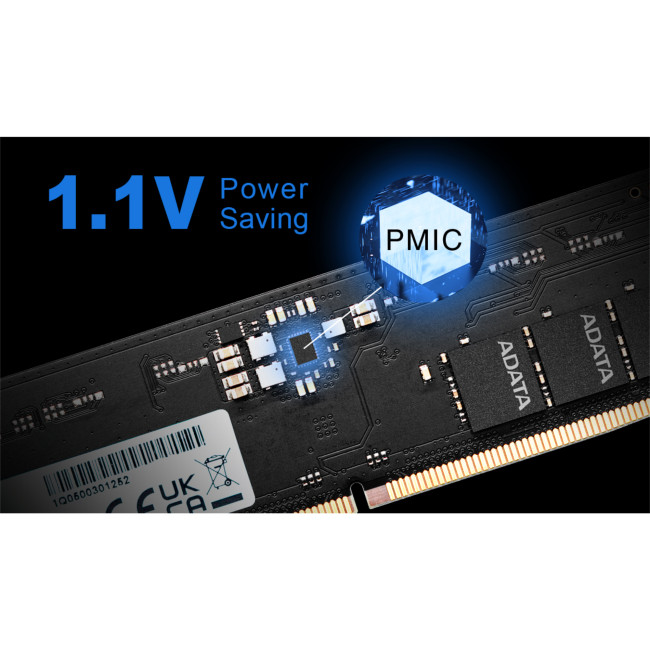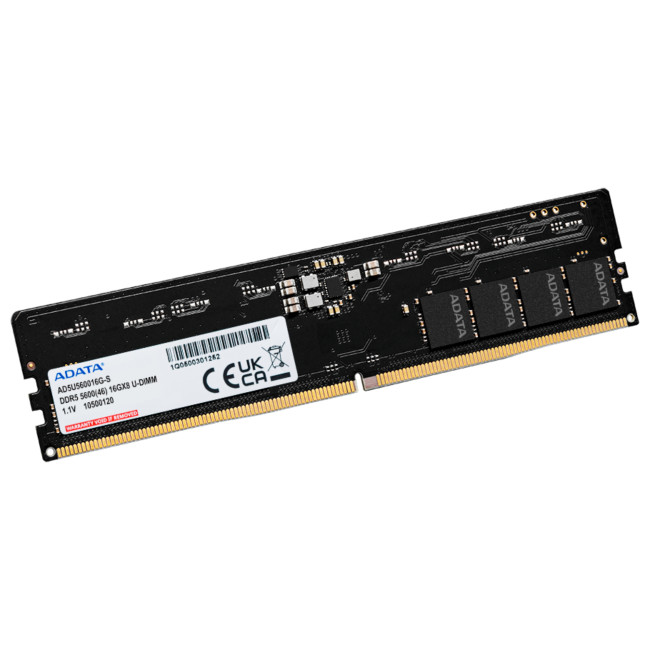Higher
Frequencies
The
DDR5-5600 U-DIMM delivers blazing frequencies of up to 5600 MHz, a
major leap from the max. frequency of DDR4 modules (3200 MHz).
More Energy-Efficient
This next-gen memory module operates on just 1.1V, making it 8%
more power-efficient than DDR4. What's more, it features a built-in
Power Management IC (PMIC) to enhanced power supply stability.
Capacity Doubled
This memory module's architecture allows for more memory bank
groups and banks. With the same area, more bank groups can be packed
into the module, doubling what was possible with DDR4, giving you
higher capacities.
Improved Stability
With error correcting code (ECC) this module can correct errors
automatically in real-time. In addition to greatly reducing the burden
of CPU calculations, it also provides increased stability and
reliability for enterprise-class computers.
QuikTips: DDR5 vs DDR4 - Appearance
DDR5 U-DIMM modules have the same dimensions and pin count as
DDR4 modules. The most obvious difference is the position of the
fool-proof notch. Also, DDR5 integrates I/O resistors with CMD/ADD
resistors. Also, the appearance of DDR5 modules are cleaner than DDR4.
In addition, you can see a PMIC in the center.
QuikTips: DDR5 vs DDR4 - Chip Architecture
DDR5 modules provide two times more capacity than DDR4 by
packing in more banks and bank groups. In addition, Burst Length,
Prefetch are also doubled, increasing the number of data writes and
the amount of data taken upfront. And to ensure data integrity, they
feature error correcting code (ECC) technology.
QuikTips: DDR5 vs DDR4 - Performance
The biggest change is that bandwidth and frequency are
significantly higher. The ADATA DDR5 memory modules deliver
frequencies of up to 4800MHz and feature bandwidth of 38.4GB/s, which
is 50% higher than the DDR4-3200. The maximum frequency is increased
1.63 times compared to DDR4.






